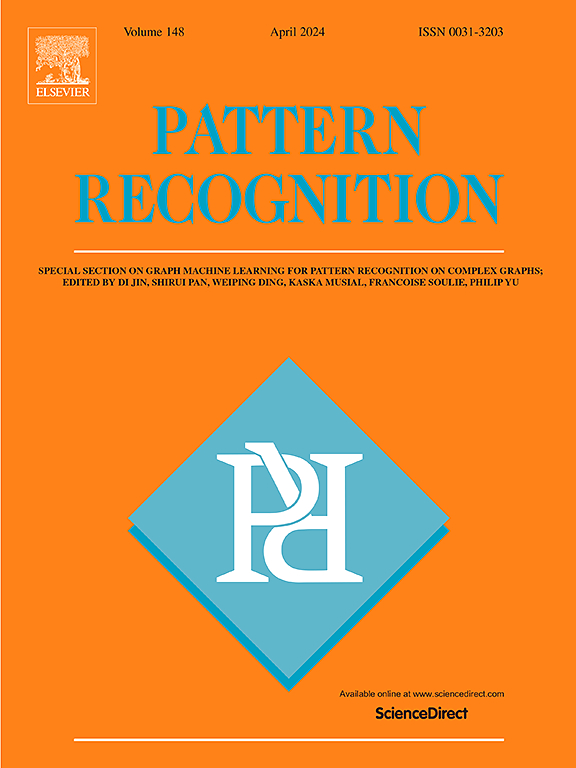Hypergraph representation learning for identifying circRNA-disease associations
IF 7.5
1区 计算机科学
Q1 COMPUTER SCIENCE, ARTIFICIAL INTELLIGENCE
引用次数: 0
Abstract
CircRNA-disease associations (CDA) are crucial for identifying circRNA biomarkers, significantly aiding the prevention, diagnosis, and treatment of complex human diseases. Traditional wet-lab methods for CDA prediction, while useful, are time-consuming, labor-intensive, and not always successful. Recently, computational methods have emerged as promising alternatives, offering more efficient CDA detection. Nevertheless, existing computational methods often overlook the multifaceted nature of CDAs, where each circRNA can associate with multiple diseases simultaneously, and vice versa. These methods typically fail to capture the beyond pairwise relationships and higher-order complex associations between circRNA-disease pairs. To this end, we propose a novel and effective biomarker computational method named HyperGRL-CDA, which is based on biological attribute information and hypergraph representation learning strategies. Its cornerstone is a hypergraph representation learning module that employs circRNA and disease similarity attributes to construct biological hypergraphs. This module leverages a symmetric hypergraph convolutional network to learn and reveal hidden, high-quality embedding representations, capturing the complex associations within these hypergraphs. Enhancing computational efficiency, HyperGRL-CDA incorporates the Extra Trees algorithm to determine CDA matching scores. Tested through five-fold cross-validation on the circR2Disease dataset, HyperGRL-CDA achieved an impressive accuracy of 92.22% and an AUC score of 96.08%. Furthermore, it demonstrated superior predictive performance on various related CDA datasets. These extensive experiments confirm HyperGRL-CDA as an efficient, accurate, and robust method for CDA prediction based on hypergraph representation learning.
识别circrna与疾病关联的超图表示学习
circRNA -疾病关联(CDA)对于识别circRNA生物标志物至关重要,有助于预防、诊断和治疗复杂的人类疾病。传统的湿实验室CDA预测方法虽然有用,但耗时、劳动密集,而且并不总是成功。最近,计算方法已经成为有希望的替代方法,提供更有效的CDA检测。然而,现有的计算方法往往忽略了CDAs的多面性,即每个circRNA可以同时与多种疾病相关联,反之亦然。这些方法通常无法捕捉到circrna -疾病对之间的超成对关系和高阶复杂关联。为此,我们提出了一种新颖有效的生物标志物计算方法HyperGRL-CDA,该方法基于生物属性信息和超图表示学习策略。它的基础是一个超图表示学习模块,该模块使用circRNA和疾病相似性属性来构建生物超图。该模块利用对称超图卷积网络来学习和揭示隐藏的高质量嵌入表示,捕获这些超图中的复杂关联。为了提高计算效率,HyperGRL-CDA结合了Extra Trees算法来确定CDA匹配分数。通过对circR2Disease数据集的五倍交叉验证,HyperGRL-CDA达到了令人印象深刻的92.22%的准确率和96.08%的AUC分数。此外,它在各种相关的CDA数据集上显示出优越的预测性能。这些广泛的实验证实了HyperGRL-CDA是一种高效、准确、鲁棒的基于超图表示学习的CDA预测方法。
本文章由计算机程序翻译,如有差异,请以英文原文为准。
求助全文
约1分钟内获得全文
求助全文
来源期刊

Pattern Recognition
工程技术-工程:电子与电气
CiteScore
14.40
自引率
16.20%
发文量
683
审稿时长
5.6 months
期刊介绍:
The field of Pattern Recognition is both mature and rapidly evolving, playing a crucial role in various related fields such as computer vision, image processing, text analysis, and neural networks. It closely intersects with machine learning and is being applied in emerging areas like biometrics, bioinformatics, multimedia data analysis, and data science. The journal Pattern Recognition, established half a century ago during the early days of computer science, has since grown significantly in scope and influence.
 求助内容:
求助内容: 应助结果提醒方式:
应助结果提醒方式:


